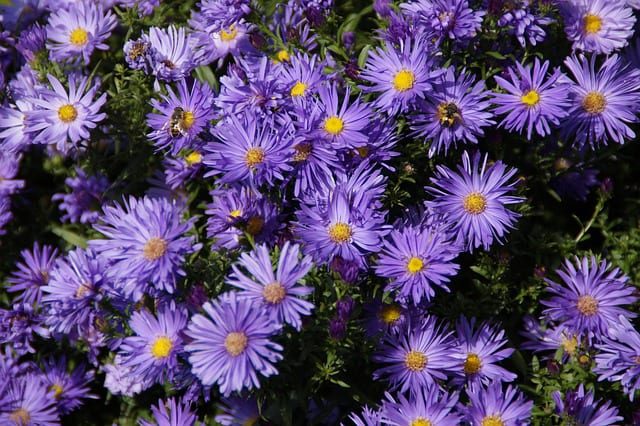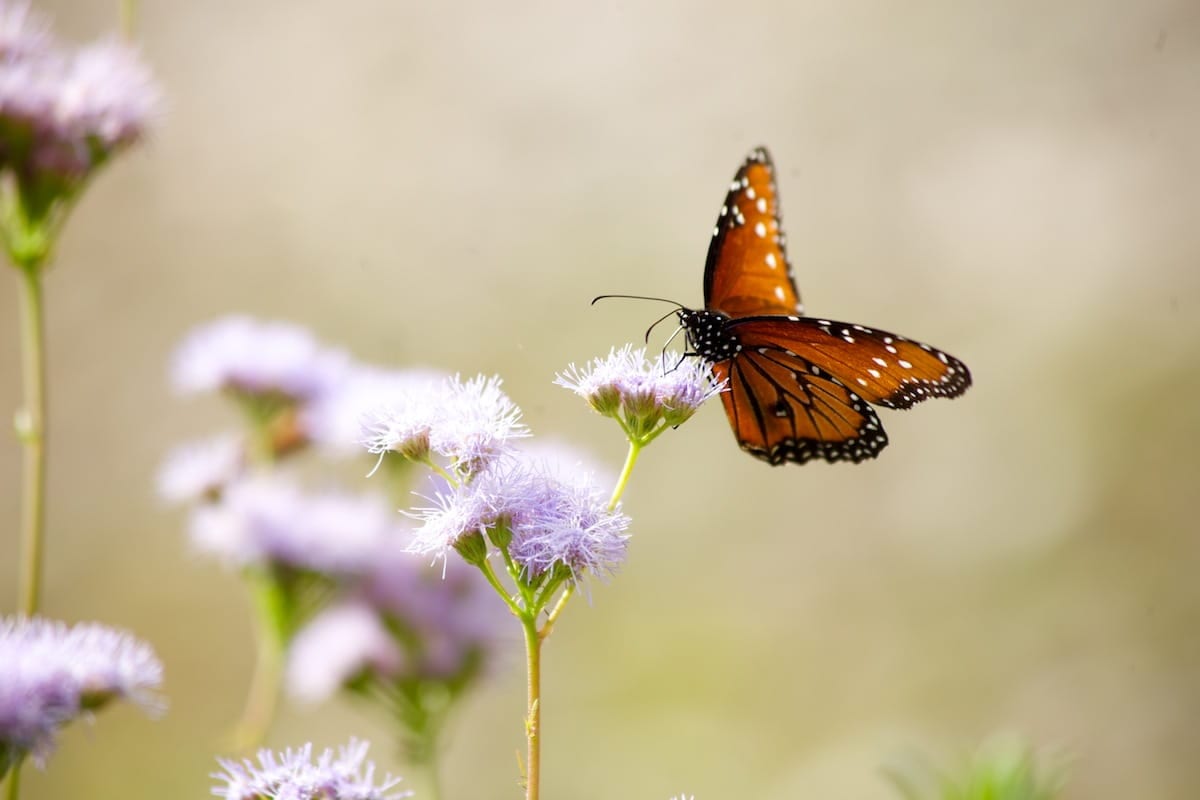Nectar plants for butterflies are a hot topic this month. With the Monarch migration peaking in our city around October 20th, we are trying to do our part in spreading the word about how important it is for all of our city to do our part in supplying butterflies their much needed fuel sources. Today’s blog offers you a glimpse of a few of Rainbow Gardens’ favorite nectar plants for butterflies here in San Antonio.
5 Nectar Plants For Butterflies In San Antonio
1. Milkweed: No surprise that milkweed tops the nectar plant list for butterflies just as it tops the host plants. It’s always great when a plant can pull double-duty and provide nutrients for a butterfly’s complete lifecycle. Look for multiple types of milkweed in the nurseries; we’ll bring them in whenever we can find them. Milkweed is on the SAWS WaterSaver Landscape Coupon approved plant list.

2. Asters: Little butterflies like skippers, hairstreaks, and blues plus common buckeyes love sipping nectar from asters and other flowers in the Asteraceae family. Flat-topped, daisy-like flowers offer an attractive place for butterflies to easily land, rest, and slurp. Asters are a great fall blooming nectar plant for hungry Monarchs that are migrating through San Antonio in October. Many flowers in the Asteraceae family are also host plants for butterflies. And since asters attract more pollinators than just butterflies, these are great plants to include in pollinator gardens.

3. Gregg’s Blue Mistflower: This is an outstanding nectar plant for butterflies and if you haven’t tried it in your garden yet, you have been missing out on swarms of Queen butterflies, Monarchs, and others. The pompom-like, perwinkle-blue flowers are huge butterfly attractors! Blue Mistflower spreads freely in the garden like a groundcover. Gregg’s Blue Mistflower is also a SAWS WaterSaver Landscape Coupon plant. (Photo courtesy SAWS.ORG)

4. Duranta: This nectar plant get overlooked and left off of many butterfly nectar plant lists, but we have no idea why, because we can personally attest to the huge draw it has to butterflies. It has that “IT’ factor that butterflies search out, and they just can’t get enough! The arching limbs dripping with clusters of wisteria-like blooms are visited over and over. Duranta makes a great stand-alone specimen in the sunny garden, or a perfect container plant.

5. Zinnia: These colorful little daisy-like flowers line annual beds and are basically a welcome mat for butterflies. They are easy to grow whether by transplants or directly seeded (we like a combo) and offer long-lasting blooms that butterflies swoon over. Deadheading, and watering under the foliage is the key to keep these nectar-filled annual flowers looking and performing their best.

We hope the pictures and information in this blog will get you excited about incorporating some butterfly nectar plants into your gardens this fall. For our favorite native nectar sources, click the link. Fall is the best time for planting and the butterfly migration that takes place through the city of San Antonio this month makes fall an extra special season in San Antonio.
~The Happy Gardener, Lisa Mulroy


thanks for setting up curbside business.
would like to order perennials but only see few,
is there a list/photos of what’s available??
just moved here from Colorado
After this nightmare over would love to come inside.
Cheers,
Hi Ines,
We do not have a list of what is in stock at the nursery as our inventory changes on a daily basis, but if you know of some plants you are interested in, you can call us and se if we have it in stock. We also have a plantfinder tool on our website that showcases plants that we are likely to carry or have carried in the past, and you can search through perennials there and then call the store to see if we have them in stock.